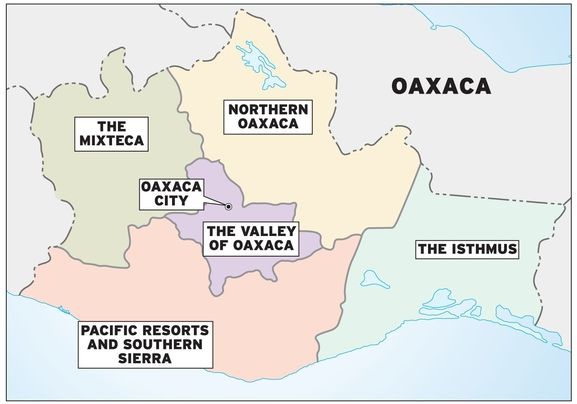Discover Oaxaca

Experience the best of Mexico, both old and new, in Oaxaca. Once isolated and little visited, this Mexican state is now fulfilling its promise. Superhighways and airline routes have increased access to its capital city, the gateway to an abundance of arts and handicrafts, renowned native cuisine, fascinating history, and rich cultural heritage, which includes 16 separate living languages, spoken in dozens of distinct dialects and spread among hundreds of ethnically separate indigenous groups.
A generation ago, the United Nations recognized Oaxaca City’s unique gifts by naming it a UNESCO World Heritage Site. The city acknowledged the compliment, rebuilding and refurbishing its graceful colonial-era buildings, churches, and monuments, including the stunning 16th century Iglesia de Santo Domingo. But the city is as much about the present as the past. By day, people linger at plaza-front sidewalk cafés. By night, the same central plaza comes alive with entertainment, from arts and crafts stalls to folkloric dance.
The cultural wealth is also abundant outside the city. The surrounding Valley of Oaxaca is ringed by the ruins of ancient civilizations, including magnificent Mitla, celebrated for the unique Greca stone fretwork decorating its walls. The vibrant market of Zaachila coexists with the mysterious and revered ruins of its pre-conquest old town. And on a high western hill overlooking everything, regal Monte Albán, Mesoamerica’s first metropolis, still reigns from its mountaintop throne.
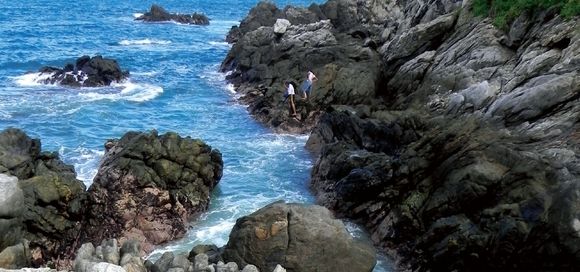
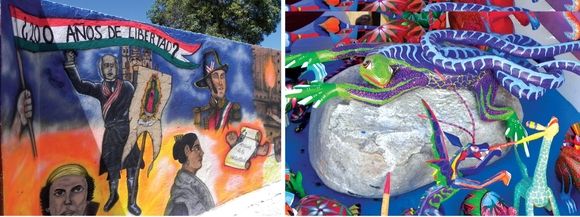
These ghosts of the ancients exist side by side with vibrant native markets, one for practically each day of the week, decorated with stalls offering everything from colorful carpets and pottery to embroidered dresses and alebrijes, Oaxaca’s celebrated wooden animals. The less-traveled Mixteca region offers its share of magnificent Dominican churches, barely explored ancient kingdoms, and natural wonders such as emerald waterfalls, limestone caves, and crystal springs. More contemporary pleasures can be found on the golden strands of Pacific coastal resorts like Puerto Ángel, the Bahías de Huatulco, and Puerto Escondido. And southeast on the Isthmus, where the continent shrinks to a narrow land bridge, you can join the celebration at near-continuous festivals.
Wherever you wander in this rich land, you’ll find excitement, lots of friendly folks, relatively low prices, and a host of traditional Mexican delights.
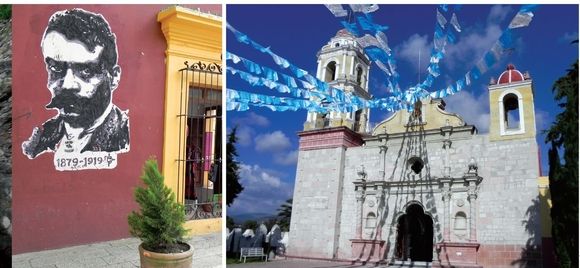
Planning Your Trip
 WHERE TO GO
WHERE TO GO
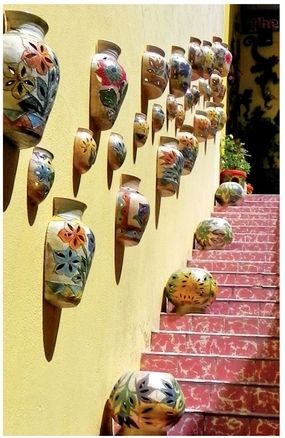
Oaxaca City
At the crossroads of the mountain-rimmed Valley of Oaxaca, the capital city offers virtually everything within its strollable downtown. Start from its charming central plaza to explore baroque churches, fetching handicrafts markets, distinguished galleries and museums, and inviting restaurants serving both authentic Oaxacan and international cuisine.
The Valley of Oaxaca
The banquet of old-Mexico experiences continues in the valley outside the city. Visit native markets with colorful arts and crafts at villages such as Teotitlán del Valle and Tlacolula on the east side; San Bartolo Coyotepec and San Antonino Castillo Velasco on the south side; and Zaachila, Arrazola, and Atzompa in the southwest. Or seek out lost cultures at noble, timeless Mitla, regal Monte Albán, monumental San José El Mogote, and ancient Suchilquitongo.
Pacific Resorts and Southern Sierra
This long, lazy land of eternal summer is embellished by its resort trio: Puerto Ángel and Huatulco, on the east side, and Puerto Escondido on the west. Enjoy beachcombing, sportfishing, swimming, snorkeling, and scuba diving. On the Puerto Ángel–Huatulco side, add plenty of golf and tennis, river rafting, and jungle coffee farms. On the Puerto Escondido side, add abundant wildlife-viewing at Laguna Manialtepec and Parque Nacional Lagunas de Chacahua.
The Mixteca
This homeland of the Mixtecs, Oaxaca’s “People of the Clouds,” is a virtually untouristed domain, ripe for adventuring. Visit monumental 16th century Dominican exconvents at Coixtlahuaca and Yanhuitlán, and the elegant open chapel at Teposcolula. Farther south, the cool, pine-tufted plateau of the High Mixteca offers groves of ancient sabino trees, plunging waterfalls, and Tlaxiaco, the “Paris of Oaxaca” with its splendid Saturday market. Even more is tucked in the Mixteca’s hidden corners: the idyllic Valley of Apoala, the ruins of Monte Negro, and emerald springs at Laguna Encantada. Farther south, the indigenous heartland around Pinotepa Nacional offers a trove of handicrafts.
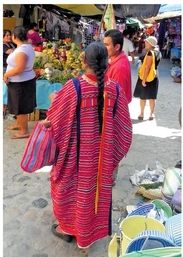
Tlaxiaco’s Saturday market
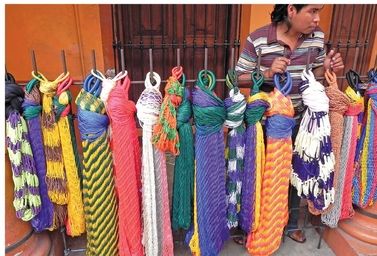
hammocks for sale in Tuxtepec
Northern Oaxaca
An exploration of northern Oaxaca begins in the villages of the Sierra Juárez, scarcely an hour north from Oaxaca City. Farther north, past the picturesque towns of Tuxtepec and Ixcatlán, the highway climbs past the gigantic whale-back massif of the Cerro Rabón, the holy mountain of the Mazatec people, to the summit, at Huautla de Jiménez, their spiritual home. Stroll the tianguis and shop for prized huipiles. Or continue another half an hour to enjoy the twin waterfalls of Las Regaderas, or explore the limestone cave near Eloxochitlán.
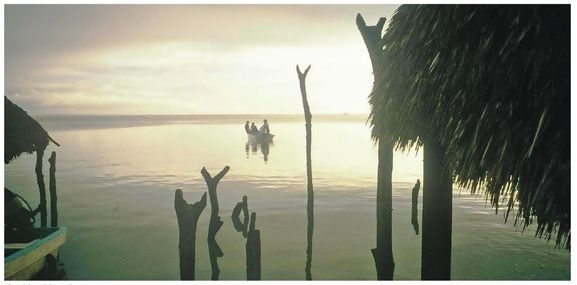
the Mar Muerto
The Isthmus
Nothing embodies the independent Isthmus spirit more than its near-continuous menu of fiestas, especially in Tehuántepec and Juchitán, where istmeño hearts beat fastest. Women dress in their spectacular floral huipiles and sway to the lovely, lilting melody of “La Sandunga,” the song of the Isthmus. Exciting excursions include crystal-blue springs at Tlacotepec, the fishing hamlet of Rincón Juárez, on the shore of the Mar Muerto, and the grand canyon of the Río Zanatepec.
 WHEN TO GO
WHEN TO GO
The most popular times to visit Oaxaca City are Christmas–New Year’s, the Guelaguetza (gay-lah-GET-zah) dance festival in July, and Día de los Muertos (Day of the Dead) week, around November 1. Although the crowds are biggest and hotel prices are highest, the city is at its merriest and most colorful.
By contrast, beaches are most popular twice yearly: during the Christmas–New Year’s holiday and Semana Santa, pre-Easter week. Droves of folks, both foreign and local, crowd restaurants and lodgings and push up hotel rates.
Oaxaca (and most of Mexico) has two sharply defined seasons: wet summer–fall and dry winter–spring. People sometimes say Oaxaca is too hot in the summer. This, however, isn’t necessarily the case. In fact, increased summer cloud cover and showers can actually create average daily temperatures in July, August, and September that are cooler than clear and very warm late April, May, and early June temperatures. If you like lush, green landscapes, summer–fall may be your season. This is true especially in the highlands around Oaxaca City, northern Oaxaca, and the Mixteca, where multicolored wildflowers decorate the roadsides and the clouds seem to billow into a 1,000-mile-high blue sky.
If you don’t mind crowds and want to experience lots of local color, go during one of Oaxaca’s festivals. If, however, you shun crowds but like the sunny, temperate winter, January, a low-occupancy season, is a good bet, especially on the beach.
October, November, and the first half of December are also good times to go (except possibly for the crowded, expensive high-holiday Día de los Muertos week). Hotel prices are cheapest, the landscape is lush and green, beaches are beautifully uncrowded, and it’s cooler and not as rainy as July, August, and September.
Passports, Tourist Cards, and Visas
Your passport (or birth or naturalization certificate) is your positive proof of national identity. Mexican authorities won’t let U.S. and Canadian citizens, including children, enter Mexico without one, and U.S. Immigration rules require that all U.S. citizens must have a valid passport in order to re-enter the United States.
DÍA DE LOS MUERTOS
Instead of mourning the dead, Mexicans celebrate the memory of their deceased relatives with a festive holiday, the Día de los Muertos (Day of the Dead). The roots of this festival go back for countless generations, long before the Spanish Conquest, to the ancient holiday of Mictecacihuatl, the guardian-goddess of the dead, whom many of the original Mexicans celebrated around the month of August.
The Spanish shifted the date to November 1 and 2, to coincide with the Catholic double holiday of All Saints Day and All Souls day. Now, Mexicans celebrate November 1 as the Día de los Angelitos (“Little Angels”) and November 2 as the Día de los Muertos, in remembrance of their deceased children and their deceased adult relatives, respectively. Although universal throughout Mexico, the holiday is most intensely celebrated in the indigenous southern regions, of Michoacán, Guerrero, Chiapas, and the entire state of Oaxaca.
The Día de los Muertos, named after the second day of the two-day holiday, amounts to a joyous reunion of all family members–both living and dead. At the end of October, people gather in their hometowns and villages to reunite with their loved ones. Around noon, on November 1, they arrive at the cemeteries and begin sweeping up the gravesites, polishing the tombstones, scattering flower petals, and lighting candles to mark the path. By early evening, all is ready. The graves are festooned with fruit, flowers, and glowing candles, and decorated with toys and candy for the angelitos and dishes loaded with the favorite foods and drinks of the deceased adults. Most importantly, most everyone has arrived; people drink, eat, and tell favorite family stories. As the evening wears on, people begin to drowse and curl up beneath blankets and spend the night in a happy vigil to welcome their departed loved ones back into the family fold once again.

For U.S. and Canadian citizens, entry by air into Mexico for a few weeks could hardly be easier. Desk clerks check your passport, airplane attendants hand out tourist cards (tarjetas turísticas), and officers make them official by stamping them at the immigration gate. Business travel permits for 30 days or fewer are handled by the same simple procedures.
Immunizations and Precautions
A good physician can recommend the proper preventatives for your Oaxaca trip. If you are going to stay pretty much in town, your doctor will probably suggest little more than updating your basic typhoid, diphtheria-tetanus, hepatitis, and polio shots.
For remote tropical areas—below 1,200 meters (4,000 ft)—doctors often recommend a gamma-globulin shot against hepatitis A and a schedule of chloroquine pills against malaria. Use other measures to discourage mosquitoes and other tropical pests. Common precautions include mosquito netting and rubbing on plenty of pure DEET (N,N dimethyl-meta-toluamide) “jungle juice,” mixed in equal parts with rubbing alcohol (70 percent isopropyl).
Getting There and Around
The majority of visitors reach Oaxaca by air, and a large fraction of those through Mexico City. There, travelers transfer to flights bound for either Oaxaca City, Puerto Escondido, or Bahías de Huatulco–Puerto Ángel.
But bus travel rules in Mexico. Hundreds of sleek luxury- and first-class bus lines roar out daily from the border, headed south. The route to Oaxaca along the Pacific shore, although the longest, requiring one or two transfers and at least three full 24-hour days, is the most scenic. Within Oaxaca, a host of lines connect virtually every town and most villages. Three distinct levels of service—luxury or super-first class, first class, and second class—are generally available.
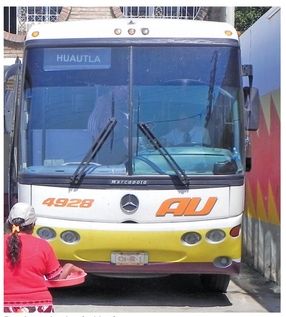
Bus travel rules in Mexico.
If you’re adventurous, but still want to have all the comforts of home, you may enjoy driving your car or RV to Oaxaca. On the other hand, the cost, risk, wear on both you and your vehicle, and the congestion hassles in towns may change your mind. Oaxaca car rentals are not cheap. With a 15 percent or more “value added” tax tacked on and mandatory Mexican car insurance, they run more than in the United States.
What to Take
Everyone should bring a hat for sun protection and a light jacket or sweater for the occasional cool evening. Loose-fitting, hand-washable, easy-to-dry clothes make for trouble-free tropical vacationing. Leave showy, expensive clothes and jewelry at home. Stow valuables in your hotel safe or carry them with you in a sturdy zipped purse or a waist pouch on your front side.
Explore Oaxaca
 THE BEST OF OAXACA
THE BEST OF OAXACA
This two-week adventure explores Oaxaca’s most fascinating, charming, and beautiful places. First-time visitors will want to spend their time in and around Oaxaca City and Valley and enjoy a few days relaxing on the coast. Returning visitors might choose to wander off the beaten path into other regions, such as the Mixteca or the Isthmus.
Although you could successfully begin this itinerary any day of the week, the ideal would be to plan your Thursday, Friday, and Sunday for visiting the Valley of Oaxaca towns of Zaachila, Ocotlán, and Tlacolula, when their tianguis (native markets) are at their biggest and best. The itinerary below consequently starts in Oaxaca City on Monday, Tuesday, and Wednesday, and then switches to the valley towns, beginning with Zaachila, on Thursday.
Day 1
Monday: Arrive in Oaxaca City. Stroll the zócalo (central plaza), visiting the cathedral and mysterious Santa Cruz de Huatulco. Take a table and enjoy the scene and dinner at a plaza-front café, or at Casa de la Abuela upstairs.
Days 2–3
Tuesday: After breakfast, stroll through the Mercado Juárez and continue to the adjacent San Juan de Dios church and market. Return uphill along Andador de Macedonio Alcalá, sampling the handicrafts shops and the sights (Museo de Arte Contemporaneo, Ex-Convento de Santa Catalina). Enjoy lunch at the Hostería Alcalá restaurant.
Spend the full afternoon at the Iglesia y Ex-Convento de Santo Domingo and the Museo de las Culturas de Oaxaca. Eat dinner at either Restaurant los Pacos or La Manantial Vegetariana. In the evening, take in a Guelaguetza folkloric dance performance.
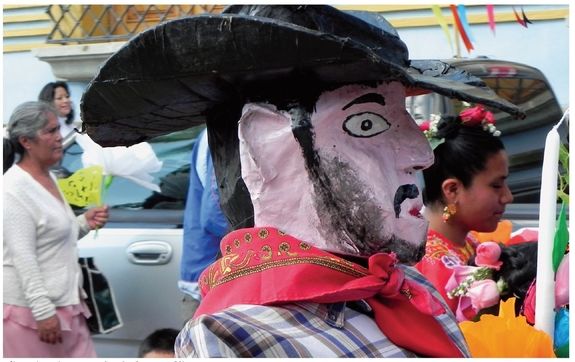
after-church procession in Oaxaca City
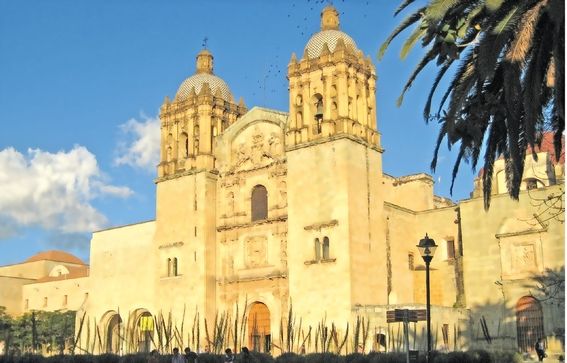
Iglesia y Ex-Convento de Santo Domingo
Wednesday: Follow your individual interests. For arts and handicrafts, check out the shops and galleries you missed on Day 2, or visit the Museo Arte Prehispánico de Rufino Tamayo or the ethno-botanical garden by the Iglesia de Santo Domingo. Visit the beloved San Agustín church and the Basilica de Nuestra Señora de la Soledad and its museum. During the evening, enjoy a music concert (Oaxaca State Band, Marimba Ensemble, or Oaxaca Orchestra) in the zócalo.
Alternatively, you might travel northwest of town, first to San José El Mogote archaeological zone and its community museum, continuing to the market at Etla, and then northwest to Suchilquitongo Community Museum and the Cerro de la Campana archaeological zone.
Days 4–5
Thursday: By 8 A.M. head southwest to Zaachila to explore the archaeological site and the market. Have lunch at a Zaachila market food stall or Restaurant La Capilla. Return via the Cuilapan de Guerrero church and Arrazola woodcarver’s village.
Friday: Head out early to the Ocotlán market. In town, visit the Casa de Cultura Rudolfo Morales and the Templo de Santo Domingo and do lunch either at a plaza-front restaurant or La Cabaña restaurant, on the highway at the south edge of town.
On your return, visit handicrafts villages San Antonino Castillo Velasco, Santo Tomás Jalieza, San Martín Tilcajete, and San Bartolo Coyotepec.
Days 6–7
Saturday: Enjoy a midmorning visit to Monte Albán. Allow around three hours, including the bookstore and museum. Eat lunch in the cafeteria or bring a picnic. Return downhill via Santa María Atzompa pottery village and handicrafts market.
Sunday: Head east early, first to the great El Tule tree. Continue to the wool textile store-workshops and community museum at Teotitlán del Valle. Have a noon lunch at either Restaurant El Descanso in town, or Restaurant El Patio on the highway.
Continue to Tlacolula for 1.5 hours at the market and the Capilla del Señor de Tlacolula. By 2:30 P.M. head east for at least an hour’s visit to the Mitla archaeological zone.
Day 8
Monday: Since the Oaxaca coast stretches about 320 kilometers (200 mi) from east to west, it’s best to divide your overnights between Puerto Ángel, on the east side, and Puerto Escondido, on the west side. Arrive in Puerto Ángel. Stroll the beachfront and follow the andador (walkway) to Playa Panteón for sunning, swimming, or snorkeling. Have dinner at Casa de Huéspedes Gundi y Tomás in Puerto Ángel or Restaurant El Alquimista in Playa Zipolite.
Days 9–10
Tuesday: Spend Day 9 enjoying the nearby beaches. Drive or bus west to Playa Zipolite and its diminutive Roca Blanca district. Have breakfast at Posada Mexico hotel restaurant; swim, surf, and sun for an hour or two, and then continue via Playa San Agustinillo village for a visit to the Centro Mexicano de la Tortuga turtle museum at Playa Mazunte. Stroll Mazunte village and beach; visit the Fábrica Ecología de Cosméticos Naturales de Mazunte, a cosmetics and soap factory. Have lunch or an early dinner at either Tania’s or Armadillo restaurant.
Wednesday: Drive, tour, or ride a colectivo to Crucecita for a day in Huatulco; transfer to a taxi to Santa Cruz de Huatulco early enough to catch one of the excursion boats to tour Bahías de Huatulco. Return mid-afternoon and go to Crucecita for a walk around the plaza-front handicrafts shops and market. Dine at Restaurant La Crucecita, or Cafe Oasis on the plaza.
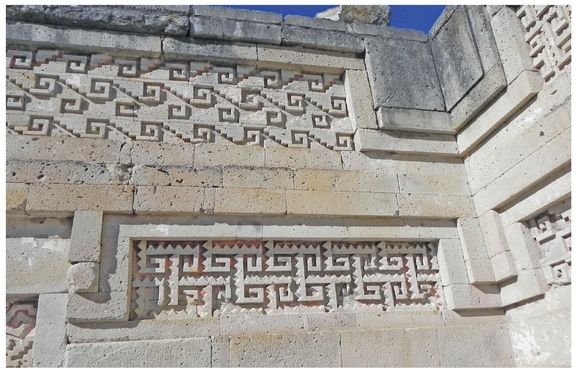
the archaeological ruins of Mitla
Days 11–12
Thursday: Travel west an hour to Puerto Escondido. Stroll the adoquín (pedestrian walkway) and soak in the scene from a shady beachfront restaurant. Catch a boat ride (or a taxi) for either or both Bahía Puerto Ángelito and Bahía Carrizalillo for more beach fun, and lunch at a beachfront palapa restaurant. Head back east over to Playa Zicatela for a sunset dinner at the Hotel Santa Fe restaurant. Cap the evening with a balmy stroll, shopping, and nightclubbing along the adoquín.
Friday: Head out for a wildlife-viewing excursion at Laguna Manialtepec by private tour, car, or bus (independent travelers get off and hire a boat at lagoon-front Isla El Gallo).
Days 13–14
Saturday: Day 13 might be a good time for simple poolside or beachfront relaxing, watching the daredevil surfers at Playa Zicatela, or perusing the adoquín shops. If you’re up for adventure, enjoy a day (or overnight) excursion west to Lagunas de Chacahua or an upland overnight in either Nopala or Juquila, to visit Oaxaca’s adored Virgen de Juquila.
Sunday: Wind down by taking a morning walk along Playa Zicatela or the seafront andador from the main Puerto Escondido beach. Alternatively, go on a fishing excursion, do some snorkeling at Bahía Carrizalillo, get a scuba lesson, or ride horseback along Playa Zicatela.
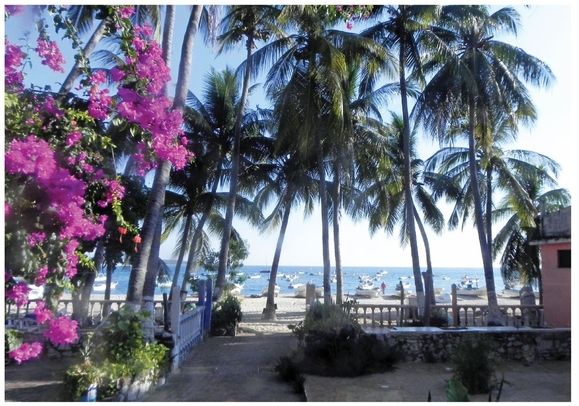
Palms and bougainvillea decorate Puerto Escondido’s playa principal.
TIANGUIS: NATIVE MARKETS
Most important Oaxaca towns have a public outdoor market every day, but a tianguis (tee-AHN-gees) only once a week. The word tianguis is an ancient native expression, synonymous with “awning,” the colorful tarpaulins that shade the mini-mountains of fruits, vegetables, crafts, and merchandise. Native people flock to tianguis everywhere in Oaxaca to buy and sell.
Although trade appears to be the prime mover, people really come to tianguis for human contact, not only in the buying and selling itself, but for gossip, entertainment, flirtation–all of the other diversions that make life worth living.
Oaxaca City
- Abastos: Saturday
- Juárez: every day
The Valley of Oaxaca
- Sola de Vega: Sunday
- Tlacolula: Sunday
- Miahuatlán: Monday
- Etla: Wednesday
- Zimatlán: Wednesday
- Ejutla: Thursday
- Zaachila: Thursday
- Ocotlán: Friday
Pacific Resorts and Southern Sierra
- Juquila: Friday, Saturday, and Sunday
- Nopala: Saturday and Sunday
- Santa María Huatulco: Saturday and Sunday
- Cacahuatepec: Sunday
- Pinotepa Nacional: Monday
- Pochutla: Monday
- Astata: Tuesday
- Huamelula: Thursday
- Jamiltepec: Thursday
Mixteca
- Nochixtlán: Sunday
- Yosundua: Sunday
- Putla: Sunday
- Huajuapan: Wednesday, Saturday
- Tamazulapan: Wednesday
- Chalcatongo: Thursday
- Juxtlahuaca: Thursday, biggest on Friday
- Tonalá: Friday
- Tlaxiaco: Saturday
Northern Oaxaca
- Cuicatlán: Saturday and Sunday
- Huautla: Sunday
- Ixtlán de Juárez: Sunday
- Tuxtepec: Sunday
- Valle Nacional: Sunday
- Yalalag: Sunday
- Villa Alta: Monday
- Ojitlán: Wednesday
- Teotitlán del Camino: Wednesday and Sunday
- Jalapa de Díaz: Thursday and Sunday
The Isthmus
- Juchitán: every day
- Salina Cruz: every day
- Tehuántepec: Wednesday and Sunday
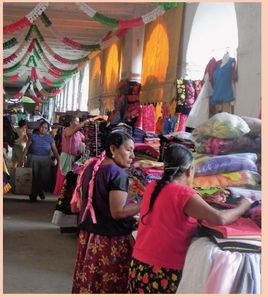
The Juchitán tianguis is every day.
 TREASURES OF OLD MEXICO
TREASURES OF OLD MEXICO
Oaxaca preserves a wealth of tradition in its museums, galleries, festivals, historic churches, pilgrimage shrines, and archaeological sites. You can also find Oaxacan culture alive today in its shops and native markets.
Oaxaca City
Along your city route, be sure to include the Museo de las Culturas de Oaxaca and its neighboring Iglesia de Santo Domingo. Of the churches, don’t miss the Basilica de Nuestra Señora de la Soledad and the Catedral de Oaxaca, with its legendary Santa Cruz de Huatulco (Holy Cross of Huatulco).
Oaxaca City overflows with handicrafts. Stroll along the Andador de Macedonio Alcalá to visit the finest source shops, such as La Mano Mágico (masks and textiles), Oro de Monte Albán (gold jewelry), and the first-rate, female-operated MARO (Mujeres Artesanías de las Regiones de Oaxaca) on Calle Cinco de Mayo, a block south of Macedonio Alcalá.
The Valley of Oaxaca
Three very worthwhile community museums welcome visitors in Teotitlán del Valle, Santa Ana del Valle, and San José El Mogote. Along the way, don’t miss the beautifully restored, lovely 16th-century churches in Tlacolula and Ocotlán.
Make certain to visit the monumental ruins, unmissable at Mitla and Monte Albán. The sites at Yagul and Lambityeco on the east side, and San José El Mogote and Suchilquitongo on the west side are also worthwhile if you have the time.
Go to the source in the celebrated handicrafts villages of Teotitlán del Valle (for wool weavings), San Bartolo Coyotepec (for black pottery), San Martín Tilcajete and Arrazola (for carved wooden animals), San Antonino Castillo Velasco (for embroidered blouses and dresses), and Santa María Atzompa (for pottery).
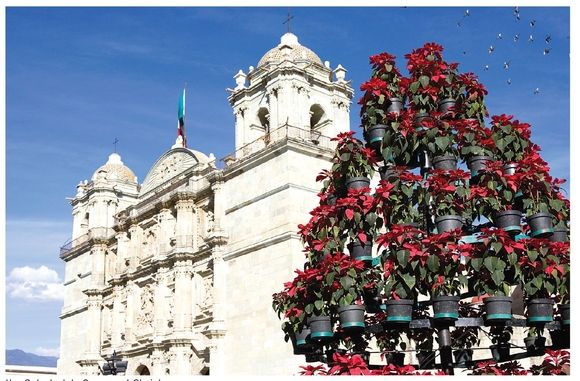
the Catedral de Oaxaca at Christmas
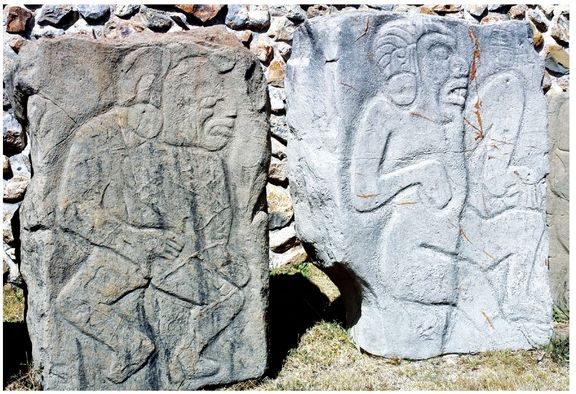
the danzantes sculptures at the ancient ruins of Monte Albán
Pacific Resorts and Southern Sierra
The Oaxaca Pacific’s must-see museum is the Centro Mexicano de la Tortuga (Turtle Museum) in Playa Mazunte. The most interesting churches to visit are (moving east to west) the shoreline chapel at Santa Cruz de Huatulco and the pair of beloved pilgrimage shrines, the Santuario de Nuestra Señora de Juquila and La Capilla del Pedimento, at Santa Catarina Juquila.
Most of Pacific Oaxaca’s handicrafts are made on the west-side Mixtec coast. Primary are masks, in Huazolotitlán and Pinotepa Don Luis; pozahuancos (indigenous Mixtec wraparound skirts), in Pinotepa Nacional and vicinity; and the embroidered huipiles sold at San Pedro Amusgos.
The Mixteca
Some professionally prepared community museums in the Mixteca welcome visitors: Memorias de Yucundaayee at San Pedro y San Pablo Tequixtepec, Museo Regional de Huajuapan at Huajuapan, and Museo Comunitario Ihitalulu at San Martín Huamelulpan are all well worth a visit. Furthermore, the Mixteca boasts some of Mexico’s most celebrated Dominican church gems, notably at Teposcolula, Yanhuitlán, and Coixtlahuaca.
You can also visit a number of archaeological sites, the most accessible being the Cerro de las Minas, at Huajuapan, and the site at Huamelulpan. For pure wonder, visit the haunting and fascinating mountaintop ruined city at Monte Negro (near Tilantongo). For the rarest of archaeological treats, hike to the Puente Colosal, near Tepelmeme, to view the big red glyph of the yet-undeciphered Mesoamerican Ñuiñe language.

the María Sabina mural, by Mario Enrique Fernández Medina
The entire Mixteca Baja is a source of soft, pliable palm sombreros, baskets, and mats. One shop, Artesanías de Palma in Huajuapan, sells all these and more. At the Juxtlahuaca market, indigenous Trique women offer embroidery and their richly decorated huipiles, while master artisan Alejandro Jesús Vera Guzmán offers expertly carved masks. At the big Tlaxiaco Saturday market, there are also carved calabazas (gourds), embroidered huipiles, and leather belts, purses, and billfolds.
Northern Oaxaca
Head north to visit petite Guelatao and its shrine and museum in honor of Benito Juárez. Farther north in Tuxtepec, find the remarkable, unreconstructed El Castillo de Moctezuma pyramid. Up the mountain, at the Huautla de Jiménez market, shop for bright, ribbon-decorated Mazatec huipiles, and don’t miss the mysterious María Sabina mural.
 ECOTOURISM LODGES
ECOTOURISM LODGES
Cabañas ecoturísticas offer a unique opportunity for visitors weary of the tourist rush who desire more contact with local people and cultures. Many of the participating communities produce fine handicrafts and enjoy scenic, wildlife-rich locations. For modest fees, these local communities furnish guides who lead visitors along scenic trails, past springs, caves, meadows, and mountain vistas, identifying useful plants and birds and animals along the way. Some communities rent mountain bikes and offer instruction in rappelling and rock climbing and other outdoor diversions.
The Oaxaca Federal-State Department of Tourism (SEDETUR) first built these tourist cabin complexes on the east side of the Valley of Oaxaca during the 1990s. Although five of the original nine are not being used, several more cabañas ecoturísticas have been built, mostly in Northern Oaxaca and the Mixteca, raising the total to about 14 operating complexes. About two dozen Oaxaca communities now invite visitors to stay in their community tourist lodging.
The cabañas are government constructed but locally managed, modern but usually rustic. Each bungalow typically sleeps four, with private hot-water shower-baths and toilet, and perhaps a kitchenette. The following are the locales for the best cabañas ecoturísticas.
The Valley of Oaxaca
Santa Ana del Valle: Master weavers’ shops, museum, lake, scenic views, hikes.
San Sebastián de las Grutas: Limestone caves, hikes, riverside picnicking, groves of grand old sabino trees.
Hierve El Agua: Hikes, scenic vistas, mineral springs, frozen stone cascades.
The Mixteca
Apoala: Idyllic village, wild canyon, cave, cascade, springs, camping.
Yosocuta: Reservoir, boating, fishing, RV and tent camping.
San Martín Huamelulpan: Ruined city, museum, hikes to other archaeological sites.
San Miguel Tequixtepec: Museum, hike to hieroglyphic rock paintings, palm weaving, restored 17th-century church.
Tepelmeme de Morelos: Museum, canyon hike to Puente Colosal natural bridge and rare Ñuiñe glyph.
Northern Oaxaca
Ixtlán de Juárez: Cloud forest, wildlife-viewing, Benito Juárez’s birthplace and museum, limestone cave.
Santa Catarina Ixtepeji: Hiking trails, campground, colonial-era church.
Benito Juárez: Cool pine-scented air, camping, panoramic views.
Cuajimoloyas: Mountain-top village, hiking, rock climbing.
Llano Grande: Woodland hikes, wildflowers.
Valle Nacional: Two separate locations. San Mateo Yetla: Riverside park, pool, kayaking, hiking, wildlife viewing. Balneario Monte Flor: Forest picnicking, kayaking, swimming in natural spring.
Reservations
Two agencies handle reservations for most of the cabañas. The Oaxaca state ecotourism (703 Av. Juárez, tel./fax 951/516-0123, info@aoaxaca.com, www.aoaxaca.com) reserves Santa Ana del Valle, Hierve El Agua, Ixtlán de Juárez, Santa Catarina Ixtepeji, Apoala, and Yosundua. They’ve also published an informative Guía Ecoturística (Ecotourism Guidebook), written in Spanish.
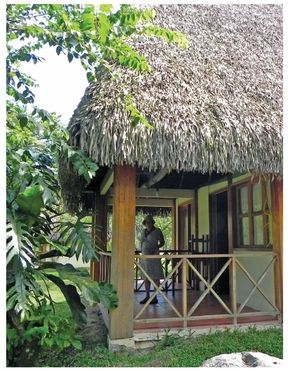
cabaña ecoturística in Valle Nacional
The other reservations agency, Expediciones Sierra Norte (M. Bravo 210, tel./fax 951/514-8271, sierranorte@oaxaca.com, www.sierranorte.org.mx), handles cabaña reservations for the several communities collectively organized as the Pueblos Mancomunados: Benito Juárez, Cuajimoloyas, and Llano Grande, and three neighboring communities, Santa Catarina Lachatao, La Guacamaya, and San Miguel Amatlan.
You can also make the reservations yourself, by phone (in Spanish), or email. Even without a prior reservation, you can nearly always rent a cabaña if you arrive by 5 or 6 P.M.(especially on non-holiday weekdays).
 NATURAL WONDERS
NATURAL WONDERS
Oaxaca abounds with natural wonders and outdoor adventures: hiking, climbing, kayaking, rafting, caving, bird-watching, and much more. It’s also home to myriad species, from white herons to iguanas and crocodiles, dolphins and whales.
Hiking, Biking, and Horseback Riding
In Oaxaca City, walk uphill to the top of breezy Cerro del Fortín, or, at Hierve El Agua (best by tour), follow the sendero peatonal (footpath) that circuits the entire fascinating site.
In Huatulco, follow the forest paths to Bahía El Organo and Bahía Cacaluta, hike or ride horseback along the Río Copalita, or hike to the coffee farm downhill from Pluma Hidalgo.
The Mixteca abounds with unforgettable walks. For example, in Apoala, follow the spectacular trail into the gorge of Las Dos Peñas Colosales to the hidden valley of the La Peña Donde Murió El Aguila con Dos Cabezas. In Tepelmeme, hike to the spectacular natural bridge, Puente Colosal.
Oaxaca’s northern mountains offer plenty of hiking and mountain biking, beginning not far from Oaxaca City, around the pine-scented Benito Juárez, Cuajimoloyas, and Ixtlán de Juárez villages.
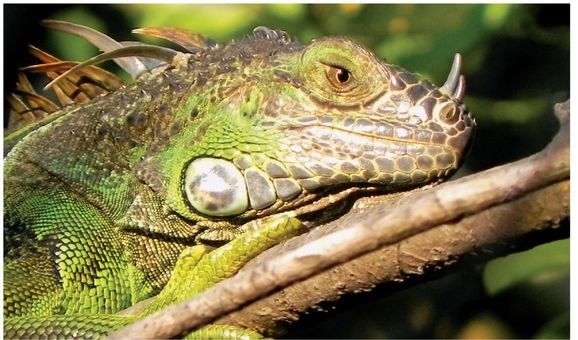
The fierce-looking iguana is actually very shy.
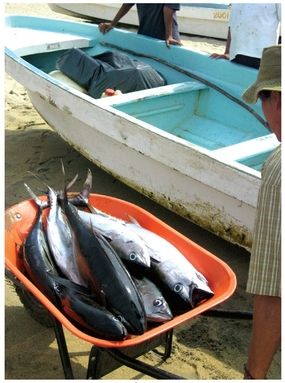
catch of the day in Puerto Ángel
River Rafting and Kayaking
When the water conditions are right (usually in the fall), outfitters take parties for rafting on the Río Copalita near Huatulco. A number of other coastal rivers, notably (moving from east to west) the Ríos Zimatán, Colotepec, Verde, and Arena, appear negotiable during the fall and early winter seasons for skilled rafters and kayakers with their own equipment.
Fishing
Fish thrive all along Pacific Oaxaca. From the beach or shoreline rocks, pluck them out of the surf with a net or rod and tackle at Huatulco’s Bahía Chahue, at the Bahía Puerto Ángel, and at Bahía Carrizalillo near Puerto Escondido. For deep-sea fishing, either launch your own boat or rent a launch in Huatulco, Puerto Ángel, or Puerto Escondido. You can also rent a fully equipped fishing boat at either Huatulco or Puerto Escondido.
If you prefer to go after freshwater fish, such as mojarra (bass) or tilapia, launch at either Yosocuta reservoir in the Mixteca or Temascal reservoir in northern Oaxaca.
Caverns, Waterfalls, and Natural Springs
In the Valley of Oaxaca, start your exploring at the limestone cavern complex near San Sebastián de las Grutas down Highway 131, south of Zimatlán.
Moving counterclockwise around the Mixteca, start at Apoala to explore the limestone cavern, natural spring, and waterfall. Farther northwest, continue to Juxtlahuaca to Laguna Encantada, a crystal-clear, spring-fed lake. Nearby, explore the triple wonder of limestone cavern, natural spring river, and lake at San Miguel de la Cueva.
In northern Oaxaca and on the Isthmus, most spectacular are the crystalline springs Monte Flor and El Zuzul and the limestone cavern at Eloxochitlán, near Huautla de Jiménez.
Kayaking
At Huatulco, for easy bay boating or kayaking, start out from the sheltered Bahía Chahue marina with your own boat or by kayak from Playa Entrega in the Bahía Santa Cruz or the beach at Bahía El Maguey. More challenging kayaking opportunities abound in the less-sheltered Huatulco bays of El Organo, Cacaluta, and San Agustín. Near Puerto Escondido, easy boating or kayaking is possible from the landings at Las Hamacas, La Alejandria, or Isla El Gallo in Laguna Manialtepec.
BEST BEACHES
BEST OVERALL
- Playa San Agustinillo (Puerto Ángel and vicinity, Playas San Agustinillo and Mazunte)
- Playa Entrega (Huatulco, Playa Entrega)
- Playa Manzanillo (Puerto Escondido, Playa Manzanillo)
BEST SURF-FISHING
- Bahía Chahue (Huatulco, Bahía Chahue)
- Playa Bachoco (Puerto Escondido, Playa Bachoco)
BEST SNORKELING
- Playa Estacahuite (Puerto Ángel and vicinity,
 Playa Estacahuite)
Playa Estacahuite) - Playa Manzanillo (Puerto Escondido, Playa Manzanillo)
BEST SURFING
- Playa Zipolite (Puerto Ángel and vicinity,
 Playa Zipolite)
Playa Zipolite) - Playa Zicatela (Puerto Escondido,
 Playa Zicatela)
Playa Zicatela)
BEST SUNSETS
- Playa Zipolite (Puerto Ángel and vicinity,
 Playa Zipolite)
Playa Zipolite) - Playa La Ventanilla (Puerto Ángel and vicinity, Playa La Ventanilla)
- Bahía Tangolunda (Huatulco, Bahía Tangolunda)
- Playa Zicatela (Escondido,
 Playa Zicatela)
Playa Zicatela)
BEST FOR KIDS
- Playa Panteón (Puerto Ángel and vicinity, Playas Principal and Panteón)
- Bahía El Maguey (Huatulco, Bahía El Maguey)
- Playa Principal (Puerto Escondido, Playa Principal)
BEST FOR CAMPING
- Playa Zipolite (Puerto Ángel and vicinity,
 Playa Zipolite)
Playa Zipolite) - El Playon at Bahía San Agustín (Huatulco, El Playon)
MOST PRISTINE
- Playa La Ventanilla (Puerto Ángel and vicinity, Playa La Ventanilla)
- Bahía Chachacual (Huatulco, Bahía Chachacual)
- Bahía Carrizalillo (Puerto Escondido, Bahía Carrizalillo)
MOST INTIMATE
- Bahía El Organo (Huatulco, Bahía El Organo)
- Bahía Carrizalillo (Puerto Escondido, Bahía Carrizalillo)
MOST SPECTACULAR
- Bahía Cacaluta (Huatulco, Bahía Cacaluta)
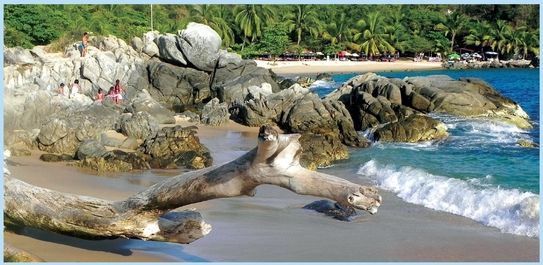
Playa Manzanillo
